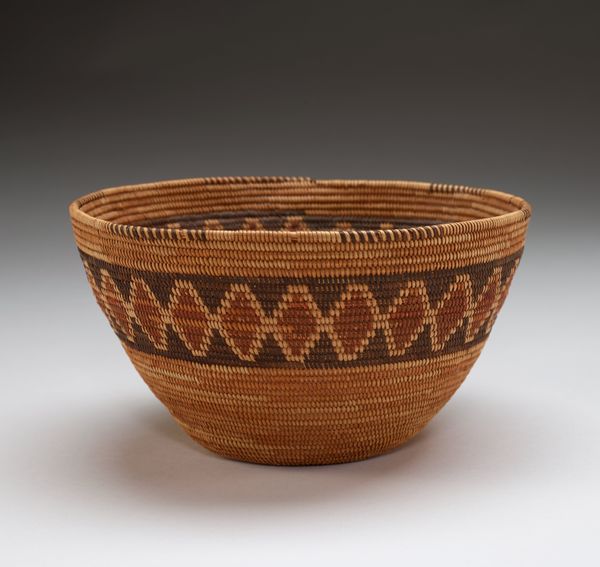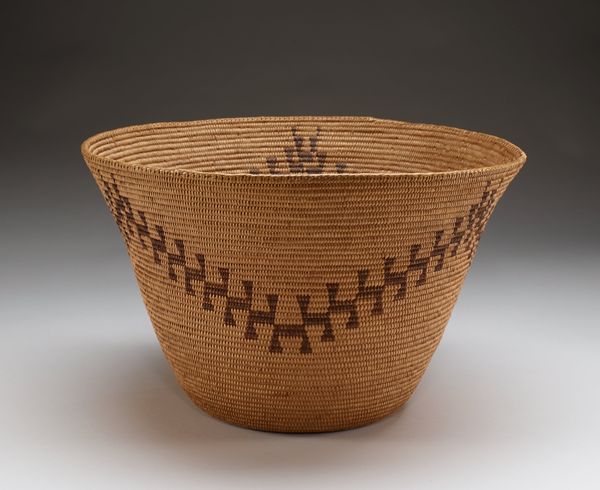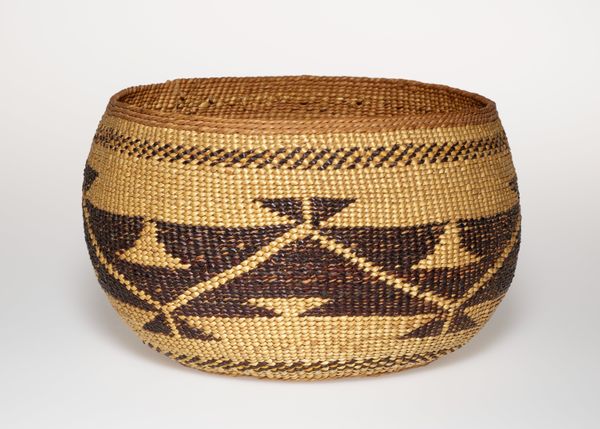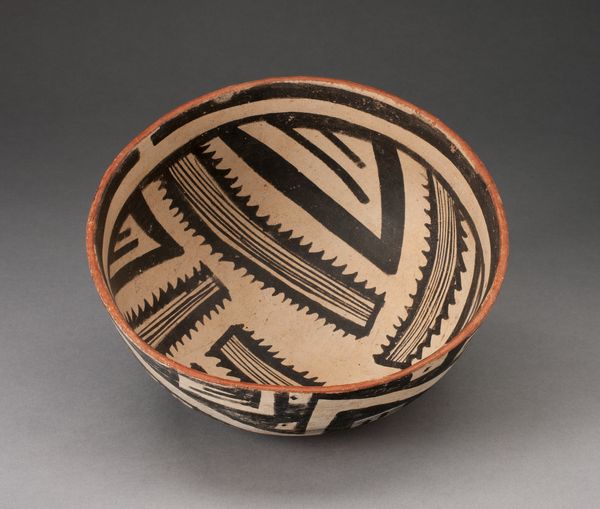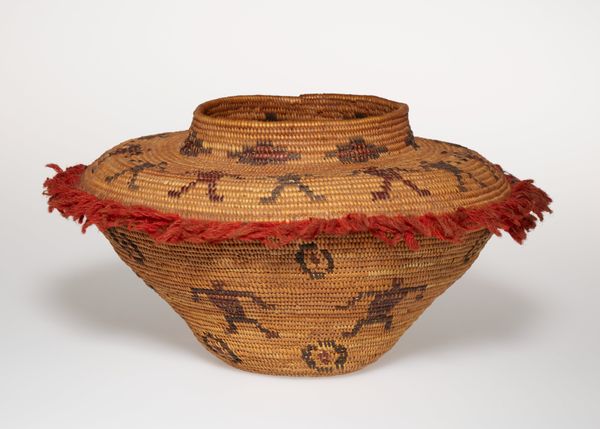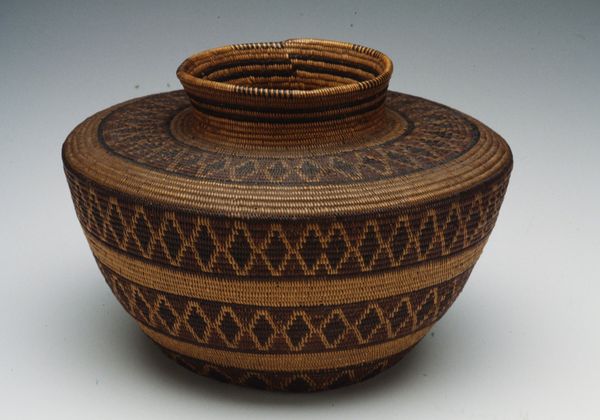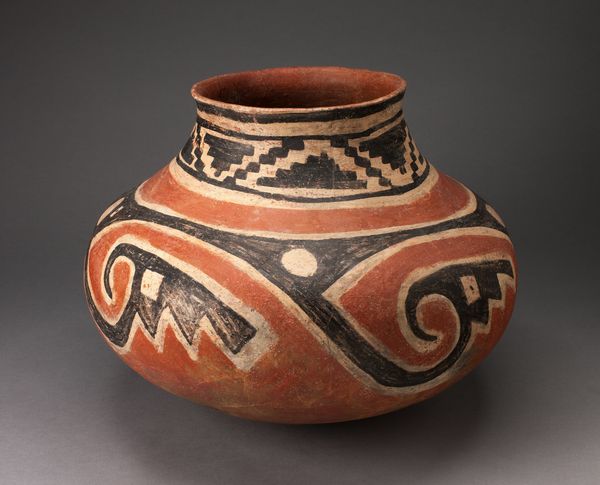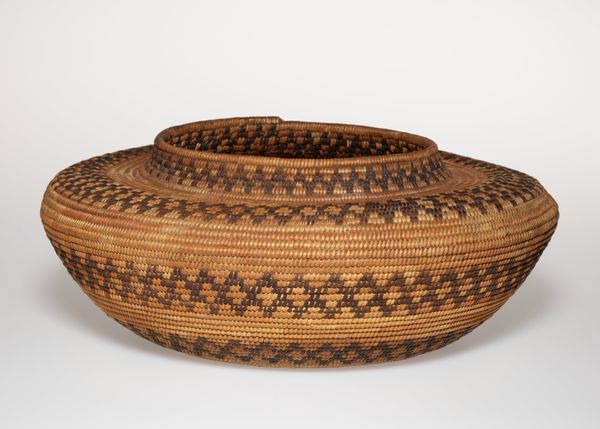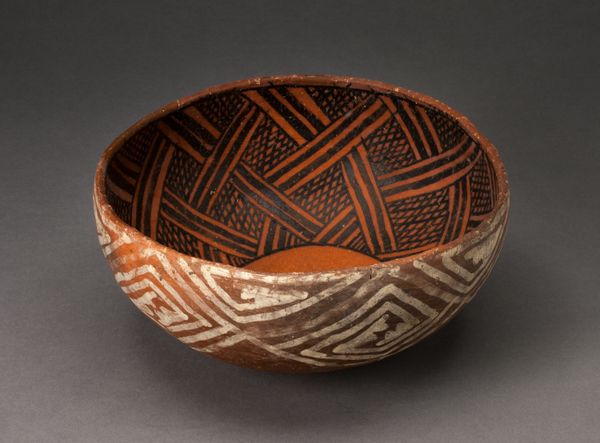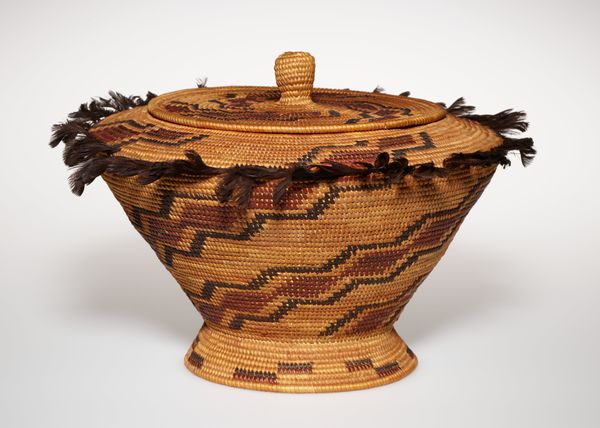
fibre-art, weaving
#
fibre-art
#
weaving
#
geometric
#
ceramic
#
indigenous-americas
Dimensions: 20.3 40.6 cm (8 × 16 in.)
Copyright: Public Domain
Editor: This woven fibre art piece, entitled “Basket,” was crafted by Maidu peoples around the late 19th century. The tight, symmetrical geometric design and subdued earthy tones give it an air of grounded sophistication. How do you interpret this piece? Curator: Well, beyond its visual appeal, I see this basket as a powerful expression of Maidu identity and resilience in the face of colonial disruption. Do you notice how the geometric patterns aren't just decorative? Editor: I see the diamond shapes, the stripes...it all looks very intentional. Curator: Exactly. Many indigenous basket designs incorporate symbolic representations of their worldviews and histories. Further, the act of weaving itself embodies resistance. Even when displaced and subjected to assimilation, craft traditions were vital forms of cultural preservation and, indeed, resurgence. How does knowing that alter your experience of the object? Editor: It gives me a much deeper appreciation for the piece. It’s not just about the basket itself but also the survival and evolution of these traditions in spite of oppression. I hadn't considered weaving as resistance, but it makes perfect sense. Curator: It is critical to understand this history! Each stitch carries knowledge, memory, and an ongoing claim to sovereignty. The basket becomes a tangible symbol of Indigenous cultural continuity, countering dominant narratives that seek to erase or diminish Native identities. Editor: I never looked at a basket as such an activist artifact. Thank you. Curator: It goes to show you what we find when we choose to engage art with both eyes open.
Comments
No comments
Be the first to comment and join the conversation on the ultimate creative platform.
